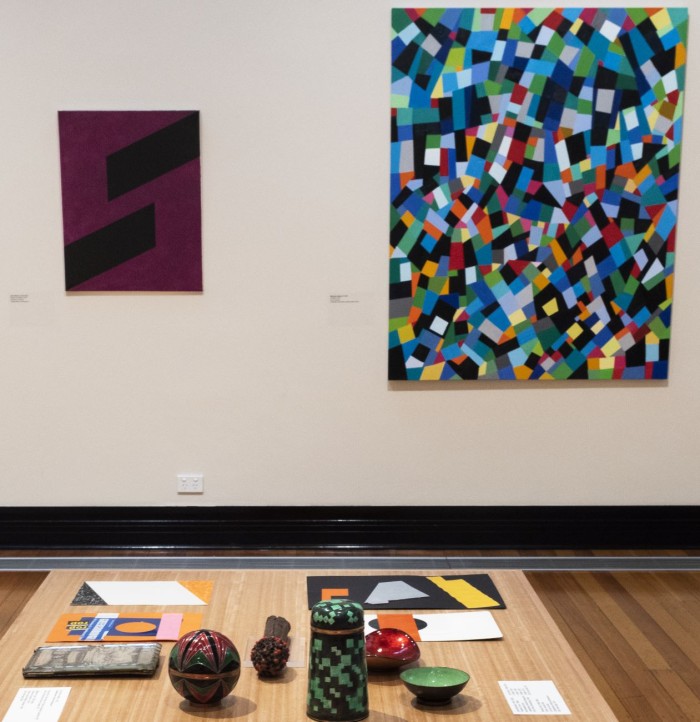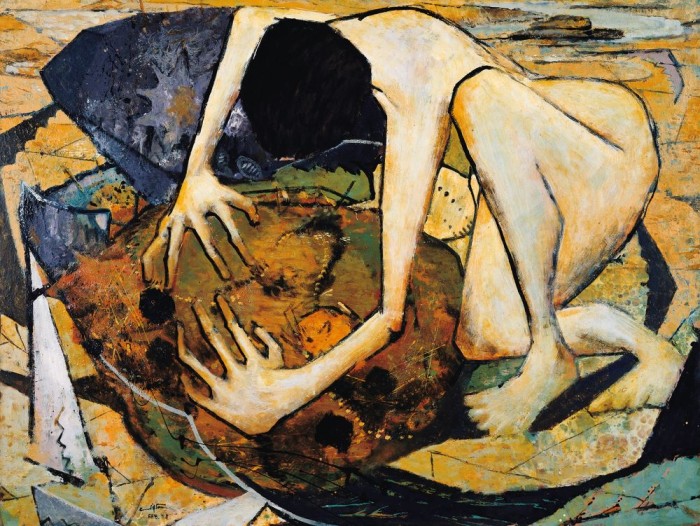Staff Profiles
Anna Schwann
Anna Schwann, Front of House Officer and Prize Administrator
What year did you join CAM: 2021
What you enjoy most about working for CAM: My work with CAM has been multifaceted so far, which has afforded connections with the team of staff, volunteers and the public alike. From this viewpoint I have the ability to act as conduit, sharing information and feedback which are the things that instigate growth and change. Since this institution has a history of being community powered it's an important part of the process to take into the future. And I get to work with lots of amazing people.
A favourite item from the collection: John Nixon, Purple and Black, 2015.
Why you’ve chosen this item: It’s probably a bit of 90’s nostalgia creeping in since the colour combination and form of this painting feel like snapshots from highschool for me. I find it repulsive yet attractive, I’m drawn to tensions within artworks and use them in my own practice. The minimal nature of this work means that the more time you spend with it, the more is revealed to you and being aware of my own dwindling attention span I appreciate the reminder to stay for a while.

Installation view, Melinda Harper in Conversation with Collection, showing John Nixon, Purple and Black, in background. Image: Julie Millowick.
Jennifer Long
Jennifer Long, Consultant and Honorary Curator
Deb Peart
Deb Peart, Honorary Conservator
What year did you join CAM: 2019.
What you enjoy most about volunteering for CAM: The excitement of discovery and the variety of curious interconnecting challenges that crop up while working with the CAM collection make working/ volunteering interesting.
A favourite item from the collection: Clifton Pugh, The Crab Catcher, 1958, oil on composition board.
Why you’ve chosen this item: The Crab Catcher tugs at a deep level. I put it down to an interest in the work of Clifton Pugh during my student days. With the abstracted, naked crab catcher strongly entwined in the rocks and immediate environment, large hands outstretched, there is a sense of full participation, yet a vulnerability. Pugh’s close up, intimate depictions of the Australian bush appear to capture the essence of one’s felt experience. The character of the Australian bush is there. Memories of childhood experiences are intensely evoked by the imagery, limited colour range, paint layering and loose brush strokes.

Clifton Pugh, The Crab Catcher, 1958, Oil on composition board.